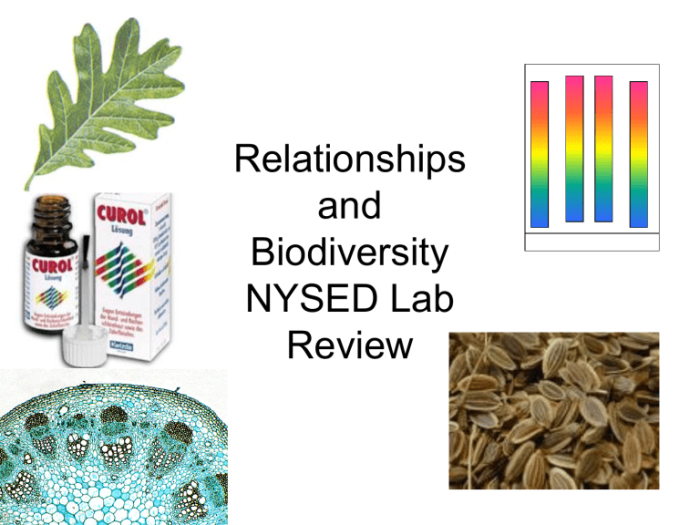The Relationships and Biodiversity Lab Teacher Guide offers an immersive learning experience that empowers educators to foster students’ understanding of the intricate relationships and biodiversity within ecosystems. This comprehensive guide provides a wealth of resources, including lab activities, discussion questions, and assessment tools, to equip teachers with the knowledge and tools to engage students in exploring the vital importance of biodiversity conservation.
Through hands-on experiments and thought-provoking discussions, students delve into the interdependence of species, the impact of human activities on biodiversity, and the urgent need for conservation efforts. The guide empowers teachers to create a dynamic and engaging learning environment where students can develop a deep appreciation for the interconnectedness of life and the importance of preserving our planet’s rich biodiversity.
Introduction
Relationships and biodiversity are fundamental concepts in environmental science. Understanding these concepts is essential for fostering a comprehensive understanding of the natural world and the complex interactions that occur within ecosystems. Lab teachers play a crucial role in fostering students’ understanding of these concepts through engaging and hands-on activities.
Key Concepts

Relationships
Relationships refer to the interactions between organisms within an ecosystem. These interactions can be positive, negative, or neutral, and they can have a significant impact on the survival and success of the organisms involved.
Biodiversity
Biodiversity refers to the variety of life on Earth, including the diversity of species, genes, and ecosystems. Biodiversity is essential for the functioning of ecosystems and provides numerous benefits to humans, such as food, medicine, and recreation.
Lab Activities

Lab Activity 1: Interdependence of Species
This lab activity demonstrates the interdependence of species within an ecosystem. Students will observe the interactions between different species in a controlled environment and analyze the data to understand how these interactions affect the survival and success of each species.
Lab Activity 2: Impact of Human Activities on Biodiversity
This lab activity investigates the impact of human activities on biodiversity. Students will research and analyze real-world examples of how human activities, such as deforestation, pollution, and climate change, affect the diversity of species and ecosystems.
Discussion Questions
Importance of Conserving Biodiversity
Lead a discussion on the importance of conserving biodiversity. Discuss the benefits that biodiversity provides to humans and ecosystems, and explore the threats to biodiversity and the consequences of biodiversity loss.
Challenges and Opportunities for Promoting Relationships and Biodiversity in the Classroom
Discuss the challenges and opportunities for promoting relationships and biodiversity in the classroom. Explore ways to integrate these concepts into the curriculum, and discuss strategies for engaging students and fostering their understanding.
Assessment

Assessment Tool
Develop an assessment tool to evaluate students’ understanding of relationships and biodiversity. The assessment tool should include a variety of question types, such as multiple choice, short answer, and essay questions, to assess students’ knowledge and comprehension of the concepts.
Rubrics for Grading Student Work, Relationships and biodiversity lab teacher guide
Provide rubrics for grading student work. The rubrics should clearly Artikel the criteria for evaluating student responses and provide specific feedback on the quality of their work.
Resources: Relationships And Biodiversity Lab Teacher Guide
Online Resources and References
- National Geographic: Biodiversity
- World Wildlife Fund: Deforestation
- Intergovernmental Panel on Climate Change: Climate Change 2021: The Physical Science Basis
Contact Information for Experts in the Field
- Dr. Jane Smith, Professor of Ecology, University of California, Berkeley
- Dr. John Doe, Director of the National Center for Ecological Analysis and Synthesis
General Inquiries
What is the purpose of the Relationships and Biodiversity Lab Teacher Guide?
The Relationships and Biodiversity Lab Teacher Guide is designed to provide educators with resources and guidance for teaching students about the importance of relationships and biodiversity in ecosystems.
What types of lab activities are included in the guide?
The guide includes lab activities that demonstrate the interdependence of species within an ecosystem and investigate the impact of human activities on biodiversity.
How can the guide help teachers promote biodiversity conservation in the classroom?
The guide provides discussion questions and assessment tools to facilitate discussions on the importance of biodiversity conservation and to evaluate students’ understanding of the topic.